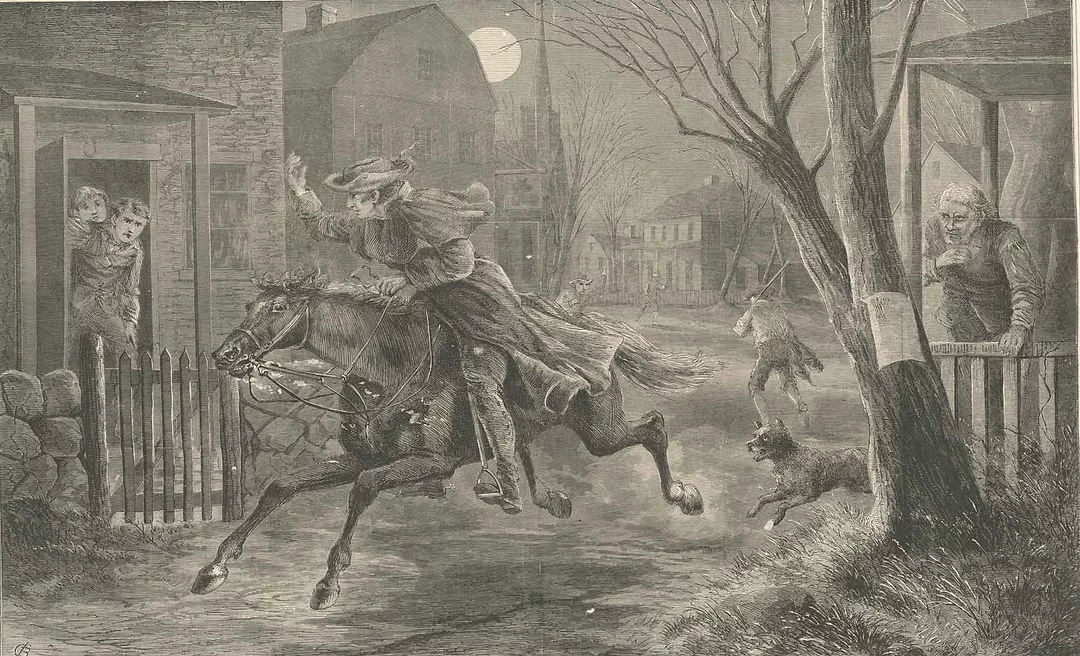In late winter and early spring of 1775, General Gage, the British military governor of Massachusetts, received orders from London to arrest colonial leaders and seize rebel arms and ammunition stockpiles. Contemplating his options, Gage prioritized the recovery of four brass cannons, which had been stolen from Boston and reportedly hidden in Concord, along with stockpiles of muskets, ammunition, and gunpowder. His plan called for seven hundred elite troops under Lieutenant Colonel Francis Smith to march to Concord on the evening of April 18, with orders to destroy all military supplies while minimizing harm to civilian property. A small party of officers was also dispatched ahead to intercept any messengers, ensuring no warnings reached Concord ahead of the troops.
However, the Massachusetts Committee of Safety had established “watches” in Roxbury, Cambridge, and Charlestown that would give early warning of any British movements into the countryside. They quickly became aware of Gage’s plans. On the evening of April 18, 1775, Dr. Joseph Warren, chair of the Committee of Safety, summoned Paul Revere. He gave him the task of riding to Lexington, Massachusetts, with the news that British soldiers stationed in Boston planned to march into the countryside. Warren believed these troops would arrest Samuel Adams and John Hancock, two prominent Massachusetts political leaders, who stayed at a house in that town. He also believed that after the men’s arrest, the troops would continue to Concord to capture or destroy the military stores stockpiled there.
Although the British troops had no orders to arrest anyone, they were undoubtedly mobilizing for a major military operation. Revere instructed an associate to hold two lit lanterns in the tower of Christ Church - a predetermined signal to supporters across the Charles River in Charlestown if Revere could not leave Boston. The two lanterns signified that the British troops were leaving Boston by water.1
After equipping himself, Revere rowed across the Charles River to Charlestown, evading the HMS Somerset. He quickly borrowed a horse and was warned that several British patrols might try to intercept him. Revere alerted militia captain Isaac Hall in Medford and roused residents throughout Menotomy, warning them that the “Regulars were out.” He reached Lexington after midnight.2
Upon arrival, he rode to where Hancock and Adams were staying, brushed past the guard, and began pounding on the door. When a sergeant told him to be quiet, Revere replied, “Noise! You’ll have enough noise before long! The Regulars are coming out!”3
Upon hearing the disturbance, John Hancock lifted his bedroom window and exclaimed, “Come in, Revere! We’re not afraid of you!”4 The two men were told of the military expedition.
William Dawes arrived in Lexington shortly thereafter with the same warning as Revere. The two riders left for Concord to warn the town of the advancing British force. Dr. Samuel Prescott joined them, but a British patrol intercepted them in Lincoln. Prescott escaped, and Dawes was unhorsed while Revere was detained. Prescott successfully warned Concord that troops were marching on the town. Revere was freed after a tense exchange with the officers and forced to walk back to Lexington on foot, where he would witness the battle.
Notes:
1 The two lanterns were a predetermined signal stating that the British troops planned to row “by sea” across the Charles River to Cambridge, rather than march “by land” out Boston Neck.
2 Modern day Arlington.
3 Deposition of William Munroe, March 7, 1825, taken from Elias Phinney, History of the Battle of Lexington, on the Morning of April 19, 1775 (Boston: Phelps and Farnham, 1825), 33.
4 Ibid.


